This past May we saw a new power meter pedal entrant announced onto the market, the SRM EXAKT pedals. Of course, SRM is well known for their power meter wares, which until now have been confined to cranksets and indoor bikes. But this time SRM partnered with LOOK to introduce a dual-branded SRM EXAKT power meter pedal that took the body of a customized LOOK pedal and added new custom SRM power meter innards, producing what both companies touted as the most accurate power meter on the market (price be damned).
But would it be?
Well, it checked off the box of the most expensive power meter to date (sometimes higher-end complete cranksets can cost more, but not for the power meter piece specifically). But would it be the most accurate pedal?
I set to find out. I’ve been testing the EXAKT pedals (dual-sided) since June across three different pedal sets, against a pile of other power meters concurrently. Be it top-end trainers like the Tacx Neo or Wahoo KICKR, as well as against industry trusted power meters including the PowerTap G3 hub and Stages LR dual-sided units. And many more. I’ve included more data in this in-depth review than ever before, with sets analyzed and downloadable stretching over a 5 month period, all on final hardware and final software.
As always, once I wrap things up here the media loaner sets of pedals and associated tools will get boxed back up and go back to SRM. Just the way I roll. With that – let’s dive into it.
What’s in the box:
You’ve got three choices for your EXAKT pedals purchase acquisition, they are:
EXAKT DUAL + SRM PC8: Dual-sided power meter pedal sets with SRM PC8 head unit (2,179EUR/$2,199USD)
EXAKT Dual: Dual-sided power meter pedal sets (1,399EUR/$1,699USD)
EXAKT Single: Single-sided power meter pedal, with a matching ‘empty’ pedal (799EUR/$899USD)
Float-wise the options are 0°, 4.5°, and 9°.
For the purposes of this box I’ve got the full dual set, all parts included. Here’s what the box looks like:
Inside you’ve got:
A) Pedals (dual or single)
B) SRM PC8 head unit (if bundle purchased)
C) LOOK Keo cleats
D) SRM EXAKT charging cable (one cable, regardless of whether single or dual is purchased)
E) Two custom installation tools for installing the SRM EXAKT pedals
F) One regular hex wrench
G) Calibration card
H) Some random paperwork
All in all, it’s more or less like most other power meters on the market. I don’t have a super-fancy unboxing set of photos as I was traveling when the initial box came and they had consolidated it down to just the core parts to keep things simple for me. You’ll see all the parts below in the review. I have re-validated though with SRM that only a single charging cable is provided, regardless of whether it’s a single or dual set.
Installation and Configuration:
If there’s one aspect of the SRM EXAKT pedals where you want to bang your head against a wall – it’s getting them installed. Which is somewhat ironic because that’s somewhat the entire appeal of going to a pedal based power meter: Portability and ease of installation. SRM offers neither here.
Oh sure, you can technically move it between bikes. But as you’ll soon see – there’s not a chance in hell you’ll want to do it again once you’ve got it correctly installed the first time. Part of this is because of the fact that as much as SRM and LOOK talk about having a new pedal power meter design not based on the previous LOOK design, that’s clearly untrue. After all – only one other power meter in the entire market has a similar setup – and that’s LOOK’s previous design that they did standalone and with Polar. Same exact installation tools as before and all.
To begin, you’ll need four things to install the pedals (even if you’re traveling):
A) The pedals (duh)
B) Your smartphone with the SRM EXAKT app installed
C) The funky twisty sorta-hex wrench tool
D) The locking wrench
If any of those four things are missing, you will not be successful in installing them. Seriously: Don’t try – they won’t be accurate without all four things. Technically you also need the standard hex wrench seen in the photo below, but you can make due when traveling by just carrying the funky one.
First, you’ll insert the pedals most of the way into the crank arm. What’s important here is to note on the inside the little blue line. This eventually needs to be in-line with the crank-arm (so pointing at the bottom bracket). Like this:
Doing so means you’ll need to toy slightly with the nut on the backside of the pedal. It’s this nut that you’ll eventually tighten using the secondary tool to get pedal on nice and snug. Oh, and make sure that little blue line doesn’t move during the whole process. Next, insert the hex-style funky wrench into the pedals in such a way that keeps the blue-line pointed at the bottom bracket and perfectly aligned. Once you’ve got that sorted now get the other tool and slowly tighten the nut on the back so that everything becomes nice and snug:
Do ensure that as part of this the blue line doesn’t move. Once all that’s done you’ll repeat the process for the other side:
Next, you need to grab your phone out for the installation app. This is where things get a bit tricky. The basic goal here is to get the app to read a value on a gauge that doesn’t move when you put pressure on it. If it does, you need to repeat the tightening process until it doesn’t anymore.
You can see below in my photo that the left gauge needle is almost totally flat to the left side of the gauge, this means that while applying pressure (using my hand), I have to rotate the inside of the pedal using the funky hex wrench until it aligns on zero. Because I only have two hands I couldn’t both take a photo of that and align at the same time. But you can watch their entire video on it here.
This sounds easy, and in some ways it’s physically easy. But it’ll likely take you a few tightening attempts (per side) to get right. So it ends up being more of an annoyance than anything. This screenshot from their video explains it and shows all the hand positions/directions fairly well.
Once everything is done, you should be able to apply pressure to the pedal and then not have the gauge move. Again, if it moves, go back a few steps and repeat. Also again, be sure not to have the blue line move. Note, expect to get some grease on you during this process, because you’re basically having to bear-hug your crankset from both sides to make this work.
Now some will say that I’m making this out to be a big deal. But may I remind you that other pedal platforms don’t require this. The Favero Assioma pedals that came out a year ago and cost half as much as the SRM pedals require simply using a hex wrench to spin on. No special tools, no fancy gauges, no nothing. It just works. Installing Garmin Vector 3 or PowerTap P1/P2 pedals are the same. I don’t understand how/why SRM thought the current installation process is acceptable in 2018.
It’s not so much that the installation is annoyingly messy, but rather, it’s prone to introducing accuracy errors. Even when you think it’s right – I find that if you come back a short bit later, then you’ve got to do it again. So you think it’s perfect, but in reality it isn’t. It’s without question the most frustrating part of the SRM EXAKT experience. And lest you think I’m alone in this – one of the only a handful of actual reviews out there notes precisely the same frustration, as well as the accuracy issues that ensue.
General Use Overview:
Once you’ve got the SRM pedals installed, they act more or less like any other dual-sided power meter out there. It’s got dual ANT+ & Bluetooth Smart broadcast functionality, as well as the capability to broadcast power, cadence, and power balance as you’d expect. It also supports standard zero-offset commands from head units like a Garmin device. I say that not to skip over the details, but to state what these days has become largely the norm: power meters following standards. And SRM seems to be doing a good job here in all my testing over the last 6 months.
Of course, one of the first things you’ll need to do is charge up the pedals. SRM has included both a reasonably long micro-USB cable as well as a tiny little pod that attaches to it. This allows you to charge one pedal:
The fact that they don’t include two charging cables for a dual setup is bizarre to me. Favero includes two charging cables, one for each pedal. People just want to be able to come back from a ride, plug both pedals in and then forget about it for another few weeks again. Having to remember which pedal you charged or coming back a few hours later feels cheap to me.
Given Favero is about 1/3rd the cost of the SRM system, there’s really no excuse for SRM not including two sets of charging cables. Another company (WatTeam) included two sets of charging cables with their even less expensive system. When you charge the most for any power meter out there, you need to back it up with the level of product parts people expect.
Next, I will note that I did have substantial battery drain issues with the SRM EXAKT pedals over the summer (it would only last a single ride). However, with the latest set I’ve had for a month or two, I haven’t had any unexpected battery drain issues. I’ll presume that’s been worked out at this point. The spec for the batteries is 100 hours.
When discussing the SRM EXAKT, it’s likely best to start with the partnership aspect. The pedal is the child of two parents – SRM and LOOK. Both companies have fairly equal responsibility for it. The production starts with LOOK, in their factories in France, where the carbon pedal bodies are made. The pedal body is almost identical to that of their existing Blade product, though I’m told the stack height is just a tiny bit higher at 11.9mm. The Q-Factor comes in at 54.6mm.
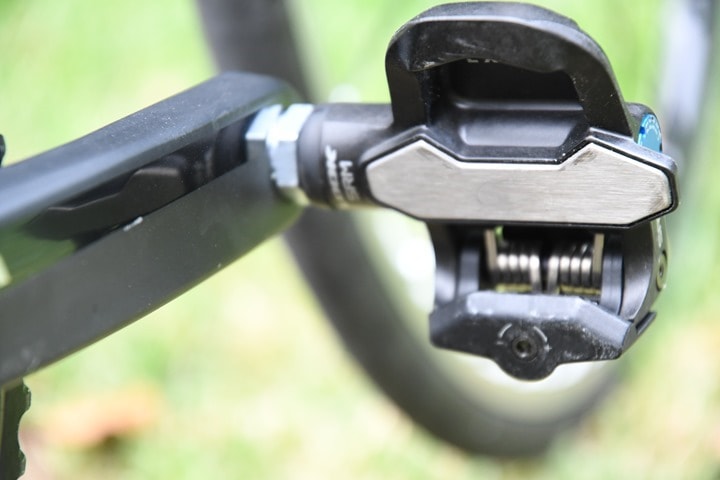
Once the pedal body is made, it’s shipped across the border to SRM in Germany. It’s there that the SRM-manufactured steel spindles are placed within the body of the pedals. These spindles are where power meter ‘goods’ are, including the four strain gauges per pedal in a fairly traditional Wheatstone bridge design. The spindles do not use an accelerometer for cadence, but rather a small magnet you can see on the exterior of the pedal body.
This magnet rotates past the spindle, allowing them to track its precise location (more on that aspect in a moment). In theory, this also reduces accelerometer-driven accuracy issues that used to be an issue in the power meter industry (but realistically, aren’t an issue in 2018).
The pedal body and spindle can be replaced. While the operation isn’t technically difficult, it’s something that SRM/LOOK will likely limit to their dealers for now. It simply requires opening that little blue cap you see below and swapping out the spindle inside.
In any case – back to manufacturing. After the pedal body is inserted into the unit and tested by SRM in Germany, the pedals are shipped back across the border to France, where LOOK packages them up in a pretty box.
The completed pedal body is IPX7 waterproof (30 minutes at 1-meter), similar to most other power meters in the industry. It claims an official weight of 155g per pedal, inclusive of the stainless steel contact surface inlaid into the pedal body. In my case, I weighed them in at slightly more than that at 156 and 157 grams for all my sets (even at the event). Perhaps my scale is wrong or something. Most of us won’t notice that gram or so one way or another.
Once installation is all taken care of (per the earlier section), the app has a couple other functions beyond that setup piece. Most notably there’s the option to toggle a Zwift compatibility switch as well as a crank length (which you’d have wanted to do during setup).
That Zwift option will blend the two Bluetooth Smart channels (left and right pedals) together into a single cohesive total power stream. This is also useful for Suunto watches too – which don’t support multi-channel power meters. Otherwise, you’re just connecting to either the left or right pedal and only getting half your data. Nobody only wants half the cookies, or data.
The app also shows a bunch of nifty data from your pedals, mostly just diagnostic data. Though I do appreciate the more exact battery status than you get on some apps/head units. I also like that it clearly shows each set of data side by side for each pedal, rather than buried down in different pages in the app.
The app also has a high-speed data transmission mode via Bluetooth Smart, at 200hz, so 200 times per second. As of now though, that data isn’t recorded, but only displayed for viewing live. They’re looking at user feedback to see if there’s any demand for recording that data (Stages does something similar, and I’ve yet to hear of many people actually using that in real-life…mostly just woulda/coulda type statements).
Note that while the ANT+ Cycling Dynamics spec is now out there and being integrated into products, SRM hasn’t announced any plans to support it yet. Garmin is supporting it, and Favero has announced they plan to very shortly as well (probably in a matter of weeks by the sounds of it). Wahoo has also stated their goals of supporting it. Hopefully we’ll see SRM join the club (along with PowerTap).
Ultimately, while this sort of advanced data is interesting, I don’t think it’s that useful from anyone when it’s either non-recordable or isn’t recorded in a standard and useful way that other app platforms can take advantage of.
Once you’re ready to ride you’ll pair it up to your head unit via either ANT+ or Bluetooth Smart. Both are supported concurrently. I’ve paired it successfully to the SRM PC8, as well as to a Garmin Edge 520 Plus, Edge 1030, Edge 520, a Garmin Fenix 5, and Zwift. All without issue (and the data from all matched).
From an ANT+ standpoint, the unit also broadcasts power balance, ANT+ pedal balance, ANT+ pedal smoothness, and ANT+ torque effectiveness. Here’s a link to a Garmin Connect activity recorded on an Edge 1030 yesterday showing all the data you’d get during a ride:
(Note: You won’t get tire pressure, that’s coming from the Quarq TyreWiz.)
Moving along to calibration and zero offset, you can perform both via ANT+ or via the smartphone app over Bluetooth Smart, using a compatible head unit to zero-offset your unit. In general, I do this before every ride, as a quick validation that things are working as expected.
You’ll trigger a calibration just like you would on other power meters by going into the ‘Calibration’ comment on your head unit.
The SRM unit will then report back the offset as seen in the app. While it reports two values back on the app (one for each pedal), it actually only reports a single value back via ANT+, so 3rd party head units like a Garmin won’t show all those values. Note that SRM could transmit both values; for example, 4iiii and Specialized both do this.
In general, I’ve seen the offset remain pretty stable throughout different table ranges. I’ve tried both doing rides where I did and didn’t do an offset ahead of time, and it seems to make no difference to accuracy. That tells me that SRM’s temp compensation algorithms are doing a good job at accounting for temp shifts (remember, these are new to SRM, no other SRM products have active temperature compensation in them yet). The company says they’re looking to add both the active temperature compensation (which requires new hardware) and Bluetooth Smart support to their crankset lineup likely next year.
With that, let’s dig into the most awaited section – the accuracy pieces.
Power Meter Accuracy Results:
I’ve long said that if your power meter isn’t accurate, then there’s no point in spending money on one. Strava can give you estimated power that’s ‘close enough’ for free, so if you’re gonna spend money on something it shouldn’t be a random number generator. Yet there are certain scenarios/products where a power meter may be less accurate than others, or perhaps it’s got known edge cases that don’t work. Neither product type is bad – but you just need to know what those use/edge cases are and whether it fits your budget or requirements.
As always, I set out to find that out. In power meters today, one of the biggest challenges is outdoor conditions. Generally speaking, indoor conditions are pretty easy to handle, but I still start there nonetheless. It allows me to dig into areas like low and high cadence, as well as just how clean numbers are at steady-state power outputs. Whereas outdoors allows me to look into water ingest concerns, temperature and humidity variations, and the all-important road surface aspects (e.g. vibrations). For reference, SRM has a claimed accuracy rate of +/- 1.5 for the EXAKT pedals.
In my testing, I generally use between 2-4 other power meters on the bike at once. I find this is the best way to validate power meters in real-world conditions. In the case of most of these tests with the SRM units (dual) I was using these other power meters or trainers concurrently over the course of the last 6 months:
Stages LR (dual-sided crankset)
PowerTap G3 (hub)
Avio single-sided crank arm
Wahoo KICKR CORE Trainer
Wahoo KICKR 2018 Trainer
Elite Drivo II Trainer
Elite Zumo Trainer
Tacx Flux S Trainer
Tacx NEO 2 Trainer
Kinetic Smart Control 2018
Said differently – I have a crapton of data and comparative products that are well trusted to compare against. Plus, there are undoubtedly other units I’m forgetting
In general, my use of other products is most often tied to other things I’m testing. Also, when it comes to data collection, I use a blend of the NPE WASP data collection devices, and a fleet of Garmin head units (mostly Garmin Edge 520 Plus, 820, and 1030 units for SRM pedals). I also did a few rides with an SRM PC8, but all comparison data here I’m showing is from the Edge .FIT files. Note all of the data can be found in the links next to each review.
First, let’s start indoors with a Zwift session to get warmed up (full data here), compared against a Tacx Neo 2 and a Stages LR (dual).
Of course, at that level it’s sorta tough to see anything, so let’s zoom into some random sections:
The above chart roughly encapsulates much of my SRM EXAKT experience into a single chart. In some cases, it’s pretty close to spot on, but in other cases it reads low. I can’t seem to figure out the exact pattern as to why that is. I’ve got three sets of units, and I’ve seen this pattern on and off a bit over time.
One might think it might be something to do with perhaps one side being offset (since in dual-power systems, the power is simply the total of the two individual left/right power meters – so if one is off, everything is off). But that’s not generally the case, or at least, consistently the case. Check out the below for example, which is pretty close to the same zoomed in section as above. It shows left/right balance of multiple power meters at once (since the Stages LR is also dual). It allows me to see when a given side is off.
In the first yellow arrow, you can clearly see the left side of the SRM pedal is abnormally lower than the others – that tells me that’s the driver to the overall total being low. Yet just a few minutes later, the left side comes back into alignment, and shortly after that arrow you can see both sides read low.
Is it perhaps that the SRM unit got this right and the others missed it? Sure, but that’s what’s kinda neat about testing against so many different power meters. When I see a trend that exists over numerous well-respected trainers (and other power meters), it becomes less likely that the EXAKT pedals are correct and instead, that there is something amiss.
I could analyze the rest of that file, but let’s look at another instead. This is another Zwift ride, with the same lineup. Except one key change: This is a new set of EXAKT pedals that SRM sent over. Calibrated and installation perfected a gazillion times using the app until perfection. Here’s that data set.
Now I’ll give the pedals a pass on the random dropouts I see above. I haven’t seen that on any other rides at all, so that’s likely just some indoor interference. No biggie. Instead, I want to focus on what I highlighted above: The fact that sometimes it’s good, and sometimes not so. In this set, things are actually pretty good across the board (again, ignoring the dropouts). There are some quirks though, and you see it slightly below everyone else in some cases As a casual reminder, the Neo should read lowest, then Stages, and then SRM. Reality dictates that within a certain accuracy range it’s rarely that perfect, but by and large the Neo should be the lowest, not the SRM pedals.
And, for the most part throughout this set, that’s usually what happens. The Neo tends to be the lowest, though sometimes during transitions of power (like going into a sprint or coming off), we see some variability. That’s also normal due to differing transmission/recording rates.
For example, let’s look at this TrainerRoad 30×30 test. Now, this was using a pre-prod Elite Zumo trainer, which was incorrectly transmitting the ‘set power’ as opposed to the ‘actual power’. While not ideal, this actually is a neat chart because it shows just how close the Stages LR and SRM can be when they want to be. On this ride, both are very very close to each other (here’s that data set):
And switching up trainers again – here’s the Tacx Flux S on a Zwift workout where the SRM pedals were reading low again (lower than both units):
Ok, let’s head outside. Starting with a ride a few days ago, against a PowerTap G3 hub and a Stages LR (data sets here):
This is actually a really fascinating set. Not because of the SRM, but rather, the PowerTap G3. The SRM itself was basically matching the Stages LR and for most of it, and roughly the PowerTap G3 as well (which should be slightly lower). But there’s one section of about 10 minutes from the 14-minute marker to the 24-minute marker where the PowerTap G3 read unexpectedly higher than the others. Before and after that, it was spot-on.
Why that one section?
Well, not sure exactly, but I suspect I know what was triggered. Before that 10-minute section we stopped to take a picture of a windmill (because, Netherlands). And after that section we stopped at a light for a few minutes. My bet here is that there was a bad auto-zero, and then it fixed itself the next time. I actually can’t remember the last time I saw something like this – it’s so incredibly rare. Alternatively, the other two were concurrently wrong. The rest of the time things mostly agree though.
It’s probably about now that someone will say: “Why not put a calibrated weight on it and see what it says to determine accuracy?”
And here’s the challenge with that: It doesn’t tell you anything these days.
It’s no more effective at determining accuracy than pedaling without another power meter to compare to. Power meters are far more complex now than a decade ago, and the underpinnings of most power meter accuracy errors come from temperature drift, cadence accelerometer inaccuracies, and installation issues. Or, just poor implementation for lateral and twisting on the strain gauges. None of which a calibrated weight will account for. Gone are the days that means much of anything.
Someone else will then say: “Well, how does it compare to a SRM crankset?”
And that’s valid as an interesting test, but not as a validation of accuracy. Specifically with temperature compensation shifts, which existing SRM cranksets can’t account for without another manual zero. As I noted earlier, during my discussion with SRM’s founder, he noted this was a key reason they added temp compensation into the EXAKT pedals, and were looking to add it into the cranksets soon. Plus, I’ve got plenty of other power meters and trainers that are reliable and known good for total power (it’s the distribution across left/right that’s more challenging).
And that’s part of the challenge I have with the EXAKT pedals. No matter how many other sets I look at (extending all the way back to late June, and none of those are sets I’ve shown in graphs above), it’s either hit or miss. Some days it’s like ‘Ok, great, things were happy today’. And then the very next day it’ll read low. After nearly five months and three sets of pedals later, I don’t have a concrete feeling on whether or not it’s accurate. I’ve spent weeks trying to figure out how to write this section and re-writing it, and adding new data sets, and it never really changes.
I can go back and forth troubleshooting it with SRM, but I don’t see that changing the results. I just wish I could decide on what these results are.
(Note: All of the charts in these accuracy sections were created using the DCR Analyzer tool. It allows you to compare power meters/trainers, heart rate, cadence, speed/pace, GPS tracks and plenty more. You can use it as well for your own gadget comparisons, more details here.)
Pedal Market Comparison:
Last year upon the release of the Vector 3 and Assioma pedals, I stacked those two up against the existing PowerTap P1 pedals in a sprawling post with more details and specifics than I can throw a stick at. Or a lot of sticks. Seriously, it got out of control.
(Left to right: PowerTap P1, Favero Assioma, SRM EXAKT, Garmin Vector 3)
Since then, the PowerTap P2 has been released, but aside from slightly decreased internal weight and slightly increased battery life, there are no other changes to the units.
Toward the end of that crazy post, I had a bit of a simplified table that took all of the details of the umpteen sections and simplified it. So, in order to help compare some aspects, I’ve added the SRM EXAKT pedals to that table and placed it below. Note that I haven’t had a chance to re-determine cornering angle yet. I did that on a specific bike of mine with a specific crank length. Thus I need to re-compare all pedals on the same bike to ensure it’s equal.
| Function/Feature | SRM X-Power | Favero Assioma Power Meter Pedals (Dual) | Garmin Vector 3 | PowerTap P1 Pedals |
|---|---|---|---|---|
| Copyright DC Rainmaker - Updated November 28th, 2024 @ 2:32 pm New Window | ||||
| Price | $1,199 | $459/$719 (single/dual) | $999 | $679 |
| Available today | Yes | Global | Started shipping October 2017 | Global |
| Measurement Type | Direct Force | Direct Force | Direct Force | Direct Force |
| Attachment area | Pedal | Pedal | Pedals | Pedals |
| Attachment limitations | Shiman oSPD | LOOK KEO COMPATIBLE CLEATS ONLY | LOOK KEO COMPATIBLE CLEATS ONLY | Look Keo variant cleats only |
| Weight (additional/net) | 172g per pedal | 150g per pedal (inclusive of pods) | 161g per pedal | 216g per pedal |
| Wireless Connectivity Type | ANT+/Bluetooth Smart | ANT+/BLUETOOTH SMART (DUAL) | ANT+/Bluetooth Smart | ANT+/Bluetooth Smart (Dual) |
| Unit auto-turns on when on bike | Yes | Yes | Yes | Yes | Battery | SRM X-Power | Favero Assioma Power Meter Pedals (Dual) | Garmin Vector 3 | PowerTap P1 Pedals |
| Battery Life | 30ish hours | 50 Hours | 120-150 hours | 60hrs+ |
| User or Factory battery replacement | Factory (support issue only) | FACTORY (SUPPORT ISSUE ONLY) | User | User |
| Battery type | Recharageable | Rechargeable | LR44 | AAA |
| Low Battery Warning | Yes | Yes | Yes | Yes | Features | SRM X-Power | Favero Assioma Power Meter Pedals (Dual) | Garmin Vector 3 | PowerTap P1 Pedals |
| Measures/Transmits Cadence | Yes | Yes | Yes | YEs |
| Ability to update firmware | Yes | Yes | Yes | Yes |
| Transmits Left/Right Power Balance (Measured) | Yes | Yes | Yes | Yes |
| Transmits Pedal Smoothness | Yes | Yes | Yes | Yes | Accuracy | SRM X-Power | Favero Assioma Power Meter Pedals (Dual) | Garmin Vector 3 | PowerTap P1 Pedals |
| Measures all power output | Yes | Yes | Yes | Yes |
| Claimed Accuracy Level | +/- 1.5% | +/- 1% | +/- 1% | +/- 1.5% |
| Includes temperature compensation | Yes | Yes | Yes | Yes |
| Supports auto-zero function | Yes | Yes | Yes | YEs |
| Supports manual calibration | Yes | Yes | Yes | Yes |
| Supports hanging weights (static test) | Yes | Yes | Yes | No | Software | SRM X-Power | Favero Assioma Power Meter Pedals (Dual) | Garmin Vector 3 | PowerTap P1 Pedals |
| Phone App to Configure/Test | Yes | Yes | Yes | Yes | Purchase | SRM X-Power | Favero Assioma Power Meter Pedals (Dual) | Garmin Vector 3 | PowerTap P1 Pedals |
| Amazon | Link | Link | Link | |
| Backcountry.com | Link | |||
| Competitive Cyclist | Link | |||
| REI | Link | DCRainmaker | SRM X-Power | Favero Assioma Power Meter Pedals (Dual) | Garmin Vector 3 | PowerTap P1 Pedals |
| Review Link | Link | Link | Link | Link |
As for a non-data driven comparison, I’d probably guess you could summarize the downsides in the most distilled manner as possible:
Favero Assioma Downside: Pod design is not as aesthetically pleasing
Garmin Vector 3: Battery cap/pod fiasco
PowerTap P1/P2: A bit of a chunker, needs a diet
SRM EXAKT: Expensive, super-clunky mounting
There’s no question the Garmin and SRM pedals take the cake in terms of beauty, but I’d say that the Favero Assioma pedals are probably the ones I’d trust the most out of the three in terms of just nailing accuracy every time with virtually no complications.
Summary:
I’ve never really been at a loss for how to wrap-up a review as much as I am on this one. Undoubtedly someone will say I did something wrong (I didn’t), or that I need to try (yet another) unit. Or that…well, I have no idea what other excuses someone will make up. In fact, SRM/Look themselves tried a variant of that approach with another reviewer, telling them:
“In life, the easiest things are not always the best.”
I guess.
Actually, no. No, that’s not correct.
It’s wrong.
(It’s also wrong in ice cream too – I can go to the corner store and easily buy a container of Ben and Jerry’s, versus trying to recreate it, which won’t generally yield a better result, even if you buy their recipe book. Though, the book is awesome. I have it.)
This isn’t some mystery magic sports tech of the 1990’s. It’s a power meter that costs almost three times the leading Favero Assioma pedals, and 70% more than the Garmin Vector 3 pedals. And more than twice that of the PowerTap P1 pedals. All of which install super easy and are fundamentally more consistent and accurate. All of them ‘just work’, and install in under 20-30 seconds.
When the tediousness of the installation process becomes a core driver for accuracy – then blaming the user is as elitist as you get. No, the issue isn’t the user here. It’s re-branding and re-using an installation system from LOOK that ultimately degrades the user experience and introduced accuracy issues.
But wait – that’s not even my accuracy issues here. I managed to get the installation happy per SRM’s colorful app graph widget.
So where does my on and off again accuracy issues come from then? I wish I knew.
SRM’s entire foundation for why the EXAKT pedals should cost so much more than their competitors is that you’re paying more for ‘greater accuracy’. But I’ve seen nothing in my testing, anyone else’s testing, or even from SRM themselves (in the form of whitepapers, studies, or such) that demonstrates greater accuracy than their competitors.
But let’s set that aside for a second. Let’s assume that they were just as accurate as anyone else. Why on earth would I still pay 2-3x as much for something that’s far clunkier to install (and even transmits less data than everyone else)? The entire point of a pedal-based power meter is almost always ease of moving between bikes. There’s no power meter that’s more difficult on the market to move between bikes than EXAKT. I’d much rather swap an SRM, Power2Max, or Quarq crankset power meter between bikes than move EXAKT pedals between bikes. One takes a couple of minutes and works every time, the other requires constant back and forth fiddling.
Ultimately I was hoping that SRM would have nailed their entrant into the power meter pedal market, but at this point it’s missed on too many marks to be a viable competitor in the space. The company needs to refine the hardware to eliminate the installation challenges, while concurrently working to address some of the unexplained accuracy issues.
With that – thanks for reading!

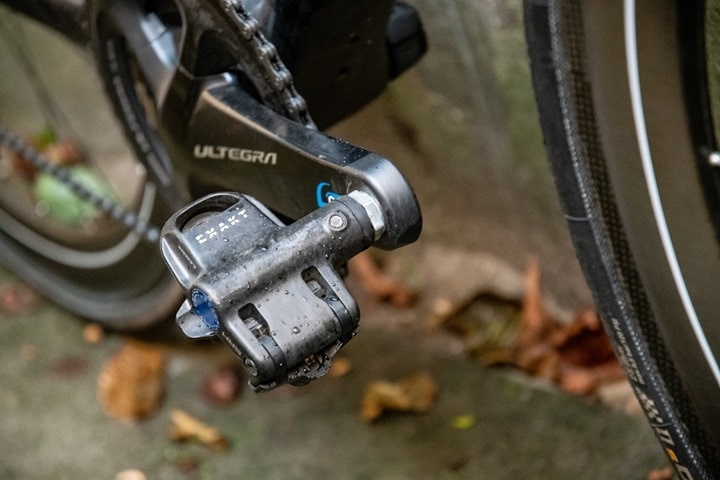
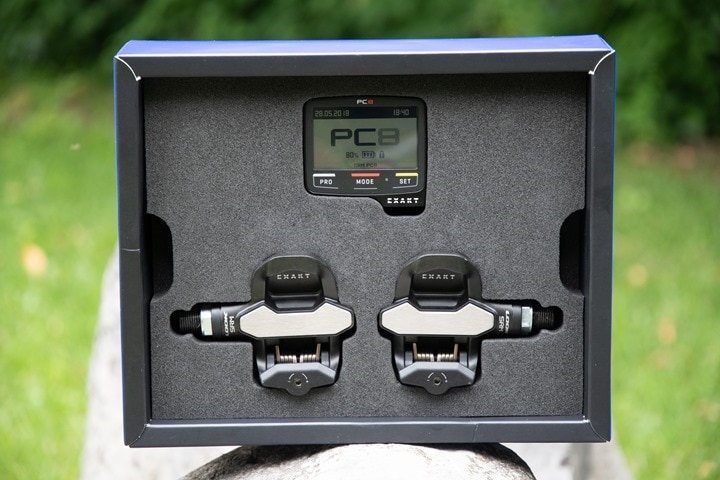
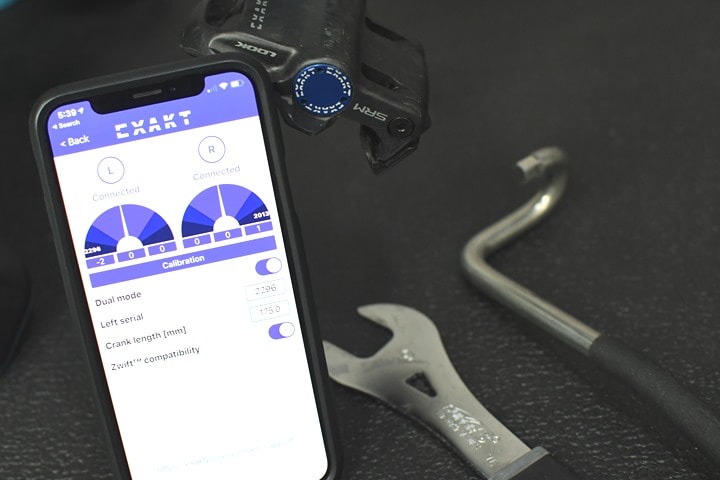
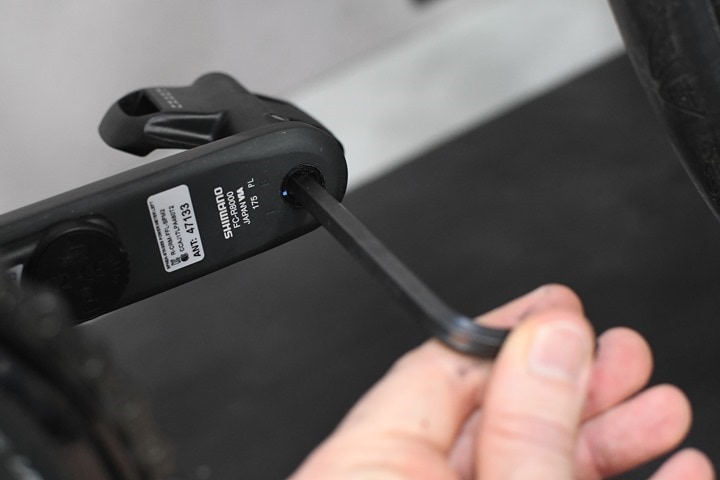

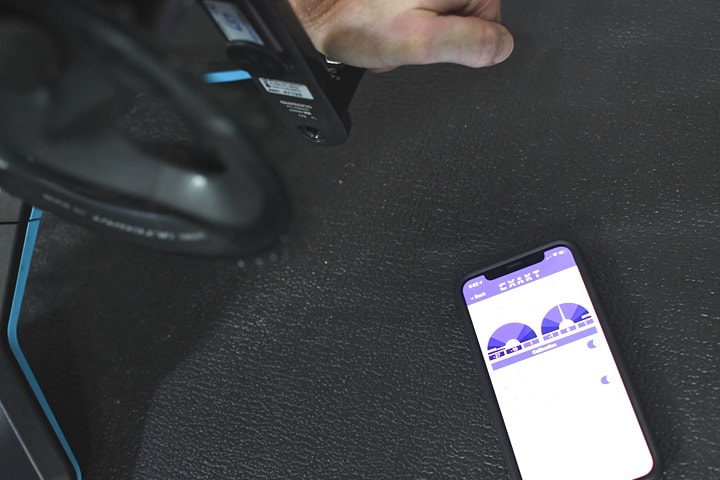

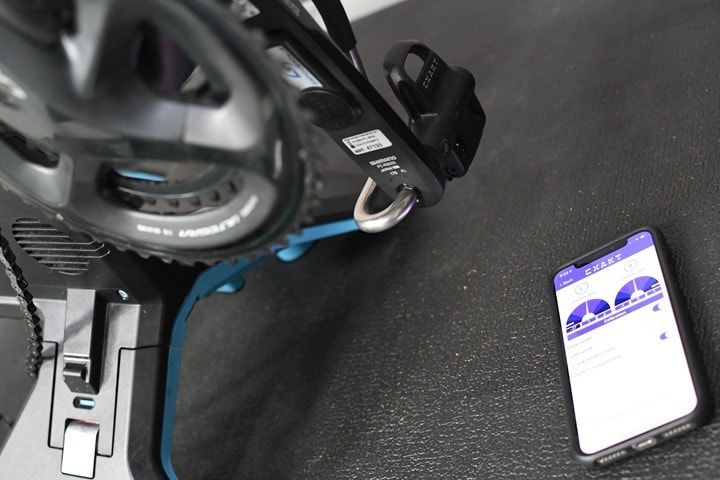
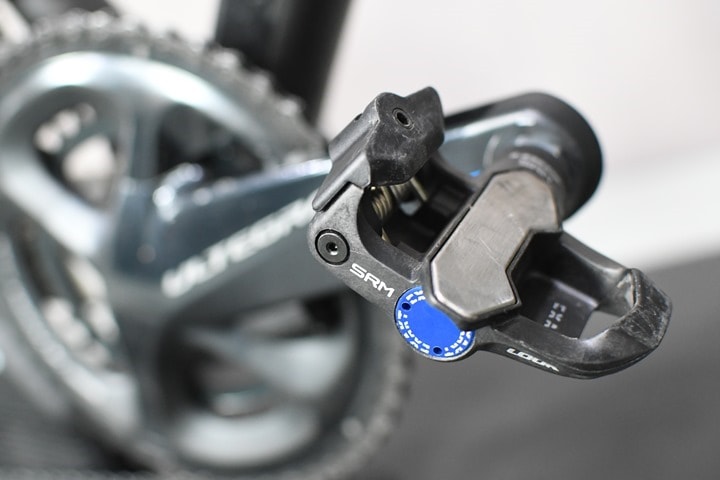
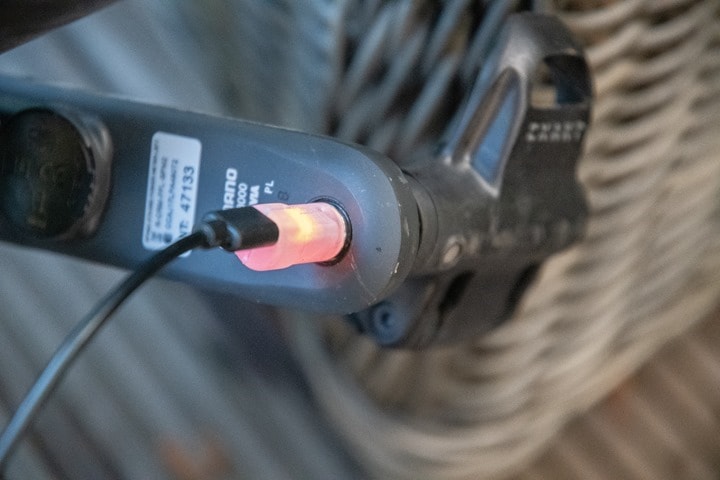
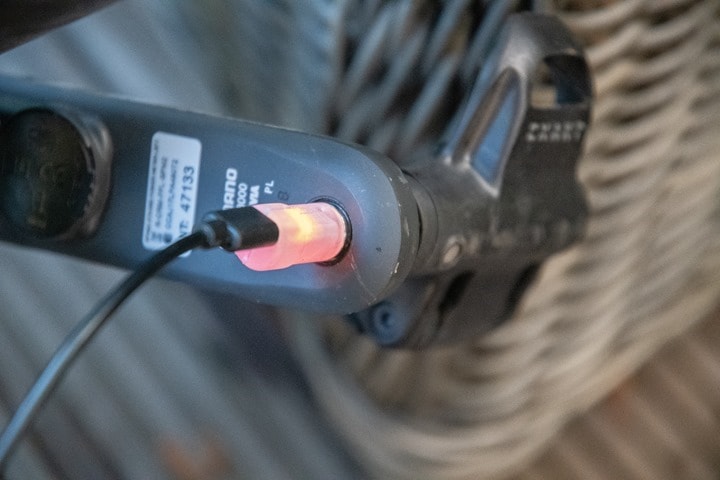
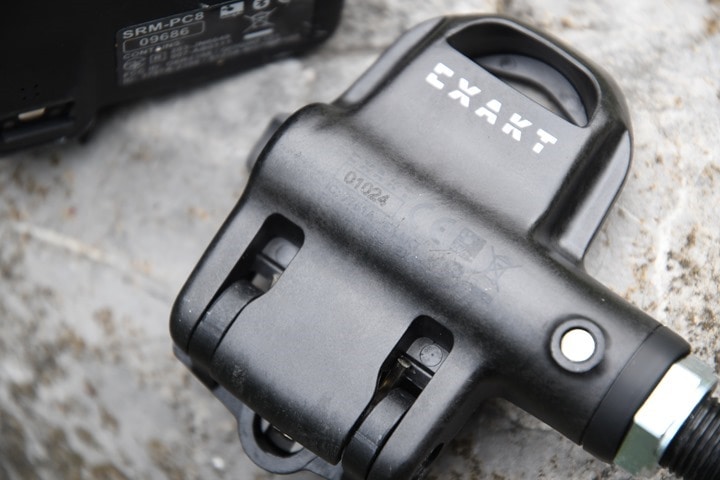
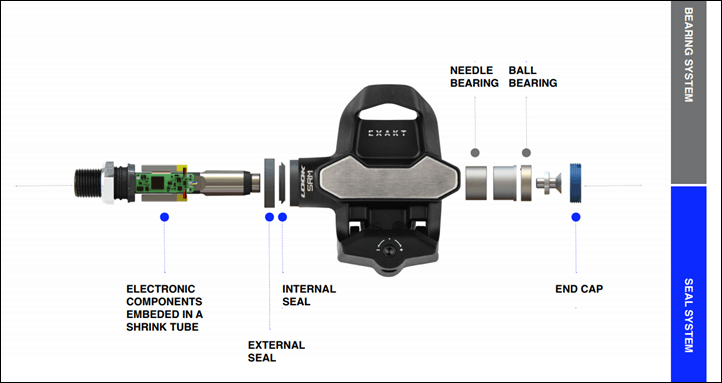

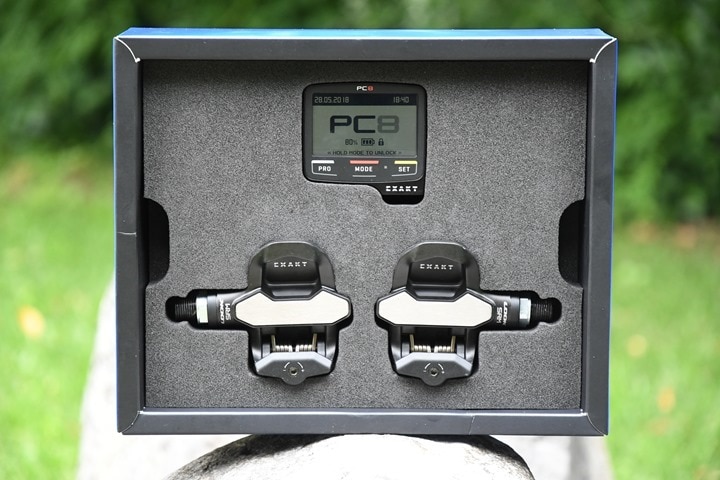
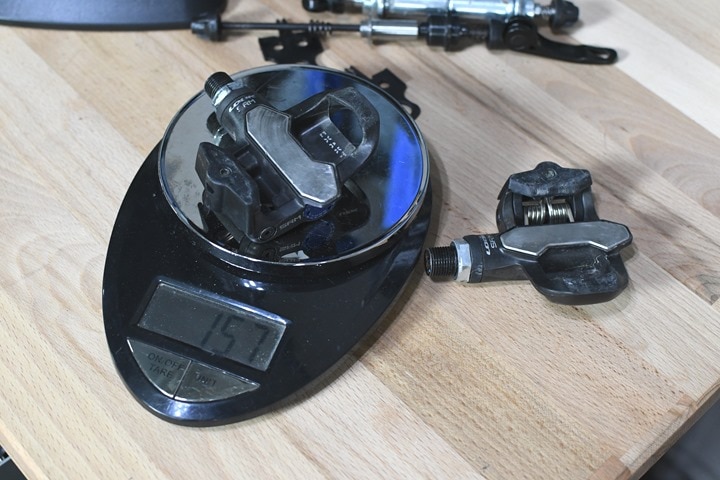
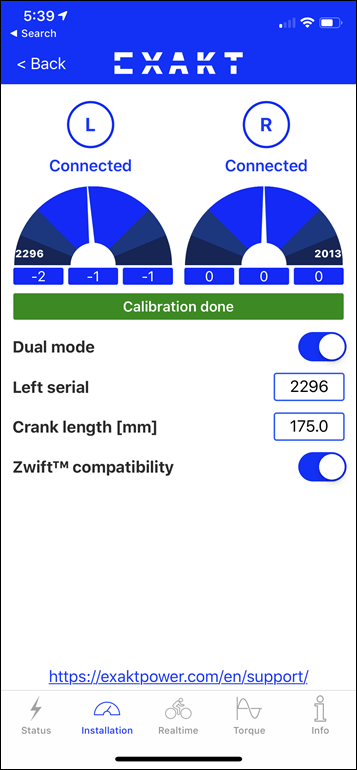
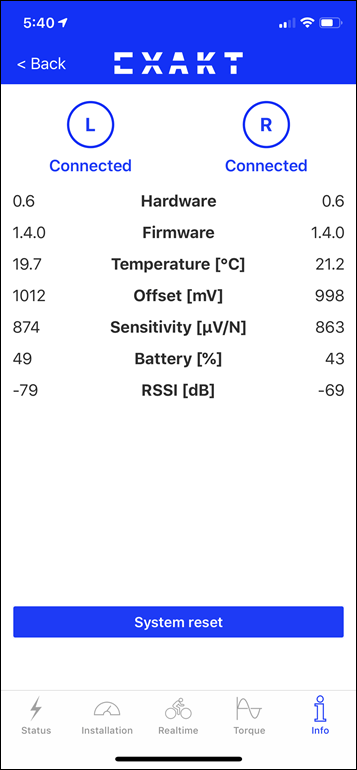
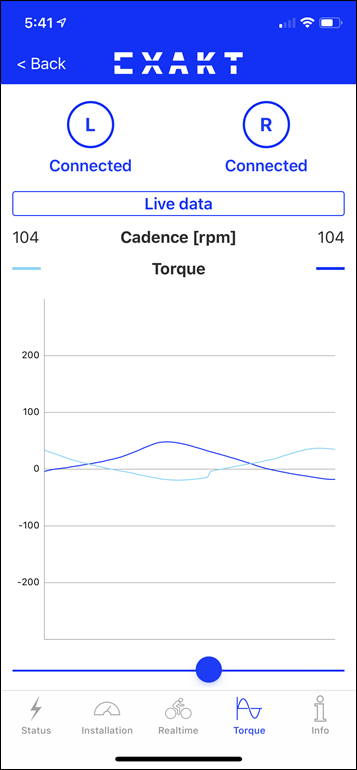
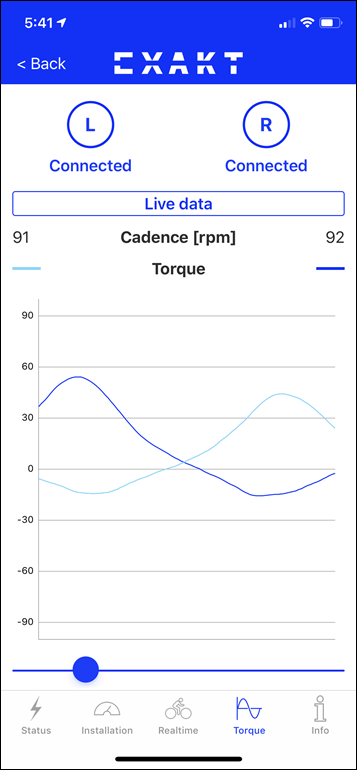
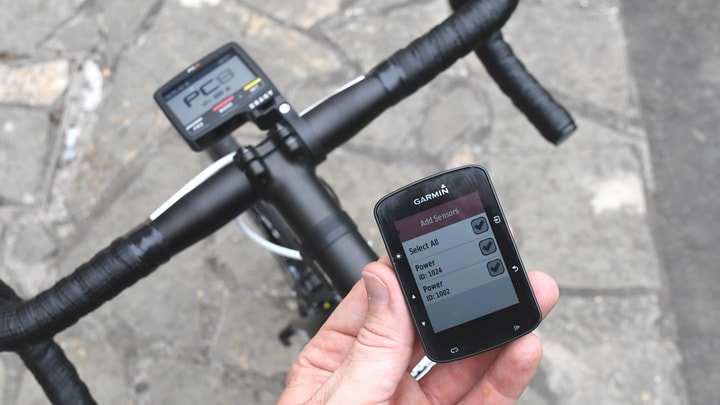
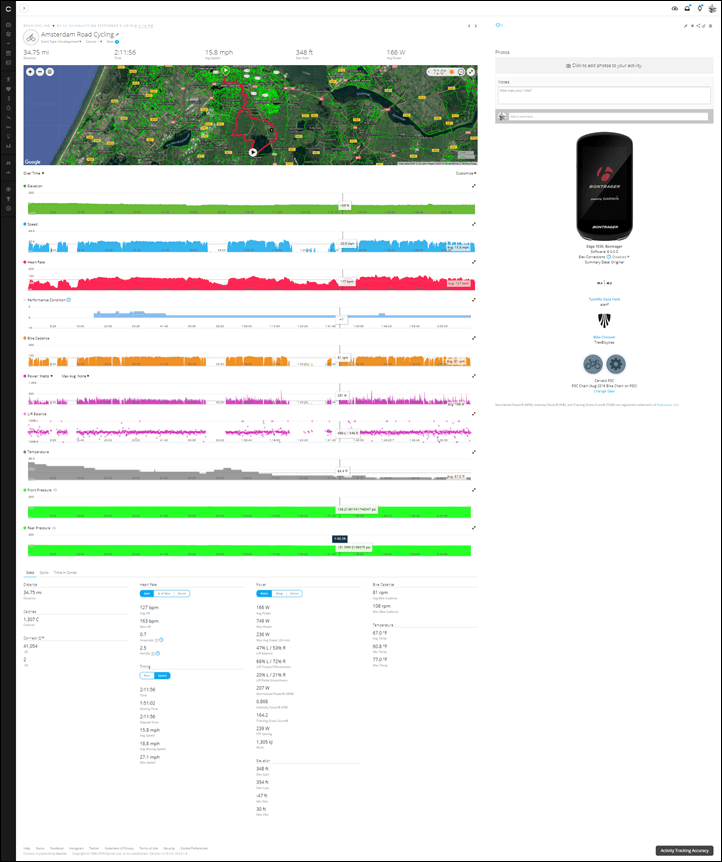
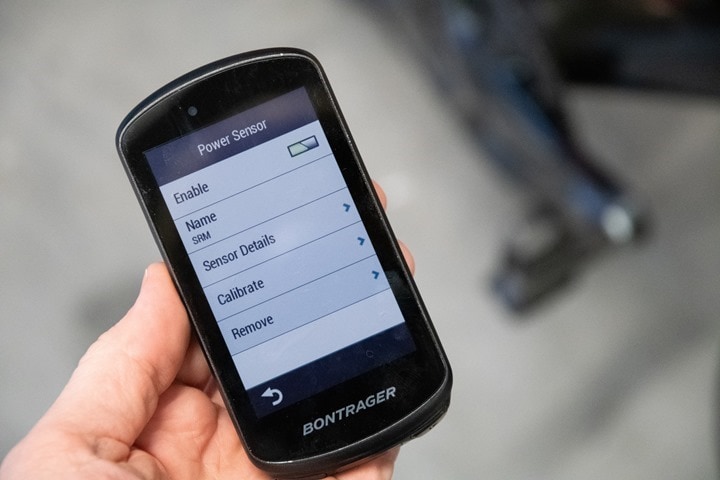
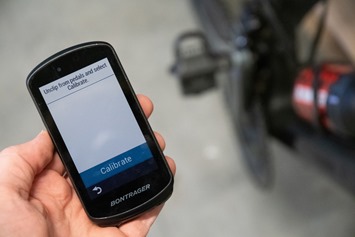
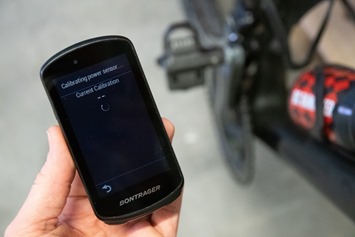
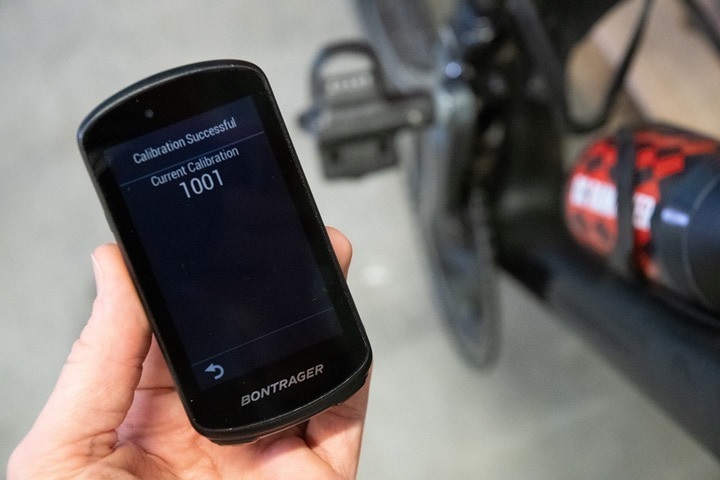
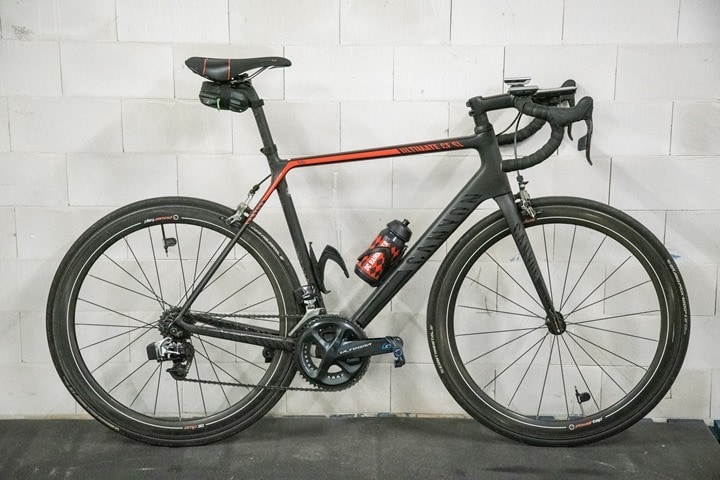











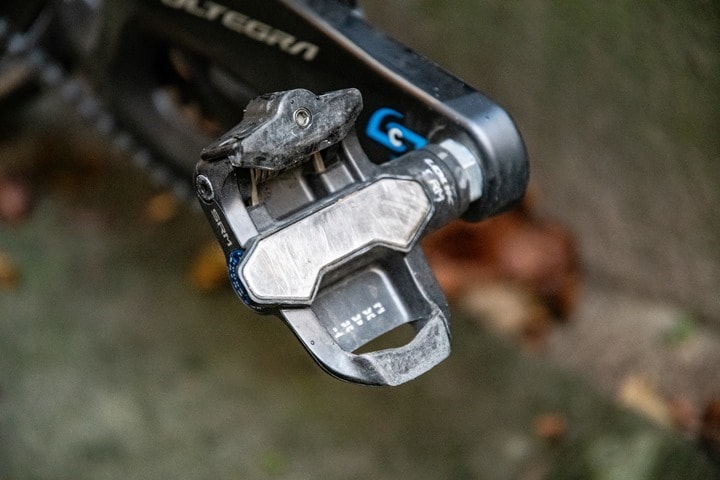





















Yeah…no thank you.
“Welcome to burn city; population, SRM/LOOK.”
Somewhere in here is a lesson (or 2, or 10 …) for SRM/Look. But based upon the “user error” mindset, I doubt they will learn anything.
Yeah…it would be interesting to see some white paper or even marking BS from SRM as to why their power meter pedals justify so much more additional cost. If they are “the best,” then why? What are their competitive advantages?
As you mentioned, even if the installation process didn’t require additional tools or tinkering, maintained it’s calibration, and came with dual charging ports…why would I spend more on this system?
I can see, engineering-wise, what they are trying to do: they want the strain gauges setup to be aligned with respect to the crank arm, so it’s optimally-located with respect to the main forces it measures. Sounds good in a meeting room. Much less in practice.
All the other ‘cheap’ pedal power meters do that automatically. There is absolutely zero reasons for this PM to cost so much. It’s inferior product for twice the price.
That’s what happens when you let the engineers define the product. It’s perfect, unless someone else tries to install it. And then it becomes that someone’s fault.
Or as an engineer, this sounds like the program managers said we already have the look/polar design. we dont have the time or budget to make your unnecessary engineering changes.
It seems Clever Training (finally) adjusted the Assioma prices: $425 (single) and $650 (dual). Another reason why this product is certainly DOA.
Moving between bikes isn’t always even between bikes. If I had to do all that when I take my same bike on holiday in a bike box I’d be very upset. That would require the setup on my first day of holiday and when I got home. No baby oil required though, so that’s something ;)
To be fair, there’s a lot of other uses for baby oil beyond just Vector 3: link to finance.yahoo.com ;)
23. Battery frit preventer-er
“and baby oil smells a lot better than WD-40”
Ray, those people are clearly crazy. Only GT85 smells better than WD40, any fule kno that! And don’t pretend you’ve never used GT85 as aftershave in an emergency, we’ve all been there :D
The best part of this review is where you get the SRM founder to admit their crankset pm has lacked temp compensation, implying the “gold standard” ain’t so gold after all.
When the app’s showing a temperature difference of 1.5 degrees between the two pedals, I’m left wondering whether temp compensation would just end up reducing accuracy even further!
Hell, let’s pretend that they were *easier* to install, and even more accurate. Considering how easy and accurate the cheaper offerings are, if you’re not entering the Tour then why would anyone care? It reminds me a lot of CompuTrainer’s blustering after Kickr came out, but as if they were the new entrant. Weird.
the comparison to computrainer seems spot on for me.
Shame to (maybe) see another market leader unable to adjust to the evolution of said market and risk becoming a non factor.
Great review Ray, thank you !
Yep .. and we all saw where that market strategy went ….
Great comparison …
Was wondering where you had gotten to on these. Now we know. Good job on the review.
Question about “reduces accelerator driven accuracy issues that used to be an issue in the power meter industry”. Isn’t there also a factor of latency in reporting the real RPM? Sure maybe not that important for normal riding but lots of structured workouts have a cadence target they want you to hit. When I use the cadence sensor that came with my kickr attached to my shoe it has a delay in reporting the change of cadence which can make it a challenge in hitting the right cadence because its easy to over correct. When I use my pioneer using magnets on the frame as the source of cadence data the change is detected much faster and that is with using the pioneer head unit to rebroadcast to get ant+. Have you noticed a difference in latency?
“you can make due when travelling by just carrying the funky one.” This sounds like a reason to always have Prince loaded to your local device when travelling. It’s just good advice.
I won’t write off the usefulness of a static weight test just yet. It’s still a valid (single) data point. It was also how I determined my original Vector 3 right pedal was reading ~2.5% lower than the left. There’s method in the madness even to use an uncertified/known weight mass to compare L/R sides if there’s unexplained wonkyness.
This aside, what a letdown by SRM. Argh!
That’s fair – it’s a good starting point, especially if you have a very specific known over/under offset. It’s more challenging in cases like I’m seeing where the accuracy comes and goes. :-/
I personally feel safer and more confident with power meter when I can do sanity checks by performing static weight test.
Right from the start with the lack of second cable and poor installation requirements, it’s to me as if SRM are saying FU to their customers.
We’re SRM we’ve been here longest so tough.
I genuinely have no idea why anybody at all would buy these?!
If I were to own these, I’d probably genuinely think about switching my cranks between bikes rather than the pedals!
that’s the question that was hunting me for years ;) – who buys this?
and it got answered when i went to my local bike shop to buy some supplies.
this shop makes alot of money with just repairing & service, it’s amazing.
there were bikes standing around for like 4000+ just waiting (most of them had powermeters, quite a few srm).
so i asked the owner and he said that you wouldn’t believe how many guys just come into the shop and want a bike with this and that & money is no problem. and yeah most of them ask for srm specifically. y? because everywhere you read srm it is related to be the “first” one and “gold standard”. He tells them that other powermeters are as good as srm for less, but they are still going with the srm.
tldr: people with money don’t care! they buy stuff and enjoy it ;)
Thank you for such an honest and unbiased review. Wish there were more reviews like this in the world in general.
I’ve been looking forward to reading this review since the SRM EXAKT was released. I was a first generation Look/Polar pedal power meter (with the proprietary W.I.N.D protocol) user for approximately 3 years and tens of thousands of kilometers.
I haven’t seen nor know any technical data on the EXACT, but everything described here is very similar to my experience with the original Look/Polar pedal power meter. So, this is purely my speculation, but it doesn’t appear SRM has changed very much at all on the power meter in order to vastly increase profit margin.
Dead on arrival
Enough said.
I have noticed that you used Avio PowerSense for comparison. Can we expect review of it anytime soon? Or just few words about accuracy?
I think lots of people is waiting for this one :)
I’m still waiting on the latest production unit. I saw a tweet saying it was coming in the post, but that was about a month ago and it hasn’t shown up. Your note reminded me I should poke them and see where the heck it went.
I can’t say I am surprised by your comments Ray. I have a PC8 and the device itself is wonderful! To be clear I bought it second hand, because they are overprized in my opinion. For intervals and the clear visibility, the device is outstanding! But when you get in touch with Simone (who is a very friendly guy btw) you can feel the – we’re the boss mentality… which is a shame… if you consider the price you pay for a pc8 you would expect if so many users are asking (sorry screaming) for some kind of gps function they would respond to it… their gold standard answer is: pc8 is a training device, we do not want to become like every other computer… ok… if you don’t want to offer something the majority of the paying customers want, I think you’re in self-destructing modus. Are they going to live from the few U23 competitors that pay for their device? I hope I am wrong, but with this attitude I don’t see a commercial place for SRM within 10 years from now… I get that they want to behold their tiny, familiar scale, but in this shifting landscape of power meters where cheaper (and accurate) power meters are coming, they really leed to te-think their strategy…
Sincerely hope I am wrong…
Thanks for the review Ray! Great job!
Kevin
I’d agree with you on the irrelevance of SRM. But I’d move up the timeline. Seems almost inconceivable that they will be viable three years from now. I would love to see them pivot and flourish but this product is clearly not going to accomplish that for them.
I’m curious to know if they respond to this, and if so, how.
Im glad unbiased and not politically correct reviews like this exist.
I stopped ready at the install process, if its not as simple as installing like a normal pedal then SRM have missed the point totally oh and the cost, can’t see them selling many sets
Two minor corrections and one question:
– … slowly tighten the nut on the back so that everything becomes nice and snug: (missing t)
– … and 70% more than the Garmin Vector 3 pedals. (it’s the other way around, duh, Garmin cost 70% of SRM or about 30% more than SRM)
– Do you think that SRM sponsored proteams will be “forced” to use Exakt pedals in comming season (and thus doing probably the most influential and powerful advertising for the product) or will riders still be using crankset based power meters? And why in your opinion are crankset based power meters most preffered in pro peloton?
Thanks on the typo.
Given Garmin costs $999, and SRM EXAKT costs $1,699 – isn’t that 70% more? 1.7*999 =1,700? 30% more would be 1,300. Or is wording my enemy here?
Not sure on whether we’ll see pro teams using this summer. Total wildcard.
As for crankset meters being preferred in the peloton, it’s mostly just ease of use for mechanics. Also, a side-dish of pedal preferences being applied too. Not to mention that most teams have been sponsored by companies that produce non-pedal based power meters. So basically, when Quarq/Shimano/Pioneer/4iiii/Stages/ROTOR (the main players in the pro peloton) only produce non-pedal based options, it’s unlikely you’d see a pedal based option on a sponsored team.
Oh, my bad, I didn’t know they cost $1699, I thought they were at $1200 – $1300 like it is in commparison table – so is there a mistake?
Ahh, crap, I didn’t catch that the comparison table database had the initial price in it (I put the correct price near start of article). That initial price was what SRM had said at launch, but it has since become much higher. Fixing…
To be fair the Origin crankset and SRM cranksets are still an excellent piece of kit. And from what you see at the camps it’s unlikely those pedals will see the light of day. They were on a few lotto training bikes last year but that was short lived from what I hear. Will definitely be curious to see what the road is forward for them.
Any reason for why your pedals had a 1.5*C difference between them at one point? Just stopping to take a picture with the drive side in the sun?
Not sure. That pic was just last night inside (where the bike had been for hours). The pedals had woken up maybe 5-10 minutes earlier. :-/
Ray, are there any mountain bike pedal power meters on the horizon?
I’d be so happy to see that, seems like MTB pedals might be a problem because I’ve never read or heard anyhting about a mtb pedal based power meter system.
I think this would be tough to implement with frequent pedal strikes etc. There would be spikes (or valleys) in the data and the pedals would likely be broken on a regular basis. Crank, hub, or bottom bracket based power makes more sense on an MTB despite the lack of portability.
Ray, thanks for the review. It matches my own experience with a test unit. I have a weird observation and looking for a comment.
I noticed that the power on ANT+ channel is reported only from the right pedal. When pedaling with left leg only, power reported to PC8 is 0, although BT connection on Exaktpower app shows correct values. It freezes torque reporting for the right though. When pedalling with right only, power is doubled in ANT+ channel and reported correctly on BT (including 0 Nm torque reported for left). In correspondence with SRM, I’ve got the following explanation from Simone: “(…) is not possible to make one leg only training since are not developed to do this and we never got this like requirement. If needed we have to define for revision 2”.
I appreciate this is an edge case, but do you think this approach to measurement may have impact on real life numbers?
Significantly more expensive than other power meters (not just other pedal-based power meters, other power meters in general.) Much fiddlier installation system. Somewhat dicey power numbers. And only one charging cable for two batteries that charge independently of each other.
That’s a hard pass from me, and anybody who asks my advice will get that same answer. With all the faults (installation system, power numbers, and single charging cable), the only way that I’d consider it would be if it were SIGNIFICANTLY cheaper than the competitors. Maybe $400-500 Australian (versus around $1100-1200 for the Favero Assioma.) Since they’re not going to do that, they need to fix those three things, and even then, the price has to be competitive with the other products already on the market.
They’re going to struggle in the marketplace.
Spelling/grammar on your talk of testing. Outside testing ‘water ingest’ – not sure how you drinking water should affect a PWM!? I guess it could, but ‘water ingress’ from outside conditions should be a larger concern! Haha ;)
Wow just wow.
I read the installation part then skipped to the summary.
Amazing that they’re so complicated to install, so expensive, and difficult to swap between bikes.
I’ll keep my P1 pedals thanks.
I tried out the pedals (a pair) but returned them due to issues. Firstly installation is really really finiky (I was never able to get a solid “0” in installation process). Then hereafter I had issues with left pedal not being seen. I did play around with Zwift settings (unified channel), and I was told that this was the issue. Yet I’m pretty sure that I did reset that.
But never mind… It did not change my view, that coming from the Assioma Duo’s (and lately also Vector 3 dual), this was a massive dissapointment. I don’t know what the heck SRM where thinking designing these pedals. Go for Assioma, Powertap or Vector 3 instead. All of these pedals work out of the box and is installed without any fuss in seconds…
Hi Thomas,
I am from a shop selling Exakt in Hong Kong. One of the consumer returned a pair of Pedal and told us that he has a problem as you.
If you are from Hong Kong, the pair should be yours.
The problem is forget to disconnect “Zwift apps before tried to connect SRM”.
One of my colleague did some tests. Result as below :
link to analyze.dcrainmaker.com
link to analyze.dcrainmaker.com
link to analyze.dcrainmaker.com
link to analyze.dcrainmaker.com
link to analyze.dcrainmaker.com
Remark : Tests based on
– Jetblack Smart Wisper ERG mode and cadence of around 95.
– Factor TT bike installed with Oysmetric Chain rings
– Look 765 bike with normal Chain rings
– 2 sets of Exakt pedal tested, both pedal produces equivalent results.
I’m from Europe… ;-)
But it doesn’t change that setting up these pedals is a nightmare. Especially when comparing to Assioma, Vector or Powertap… It’s such a complex process…
The apps. “Zwift option” gave me some trouble at the beginning. Luckily, I solved it quickly.
This is the only tricky thing we found.
Installation video is clear enough. I think all people could handle without big difficulty.
I like things tight and absolutely perfect, hence I did spent about an hour and was not able to get a solid 0 in “installation-value”.
The process is massivly more complicated than Garmin, Assioma and Powertap. With these three brands, you install them by just mounting them. It takes 10s pr. side and then DONE. That’s my point with the SRM’s – their installation process is just – well let’s just say from a different time ;-)
The issue isn’t whether installation is clear, it’s that it’s super-prone to accuracy issues. And it’s cumbersome compared to all other options on the market. Especially with the PowerTap P1 now at $499 (dual).
That’s just spot on Ray
My last set of pedals were Keo 2 Max Blade pedals. The rear part of the pedal wore out in 8000 miles such that I would unclip under high power efforts. The wear is from unclipping. Others report poor longevity of these pedals, as well as an annoying squeak from cleat contact. The SRM pedals have the same rear design as the Keo 2 Max Blade pedals. I doubt they will last more than a few seasons. I have a Stages SC3 indoor bike with a Stages Left side power meter. I matches nicely with my outdoor bikes, one with a Quarq dZero, and the other with a Powertap G3 hub. I have run both the Quarq and the G3 on a Computrainer indoor system, and both are within a percent or 2 of the Computrainer power measurement. I trust my Stages left only, my G3 and my Quarq. It would be interesting if you ever tested power meters against a Computrainer. Happy holidays.
There are much better and more accurate trainers than Computrainer nowadays to be used in tests and comparisons to be honest. I remember Ray using it for tests till around 2015 though.
None of this really matters since the UCI is gonna ban power meters, right?
=P
From the other review you linked. Comment from SRM:
“It may be a little bit tricky, but SRM assures us that this is the best way. If you want to be really accurate and get the right data, you have to be really strict on the installation. When you install a Garmin pedal, it’s really easy, but that doesn’t mean that it is right.”
If they delivered on the accuracy side, maybe they have a point. But they are not even close to deliver on that and are still that arrogant.
And this is why Ray is trusted.
It doesn’t matter that this is SRM, arguably, the daddy of all crank based power meters.
He took their product, evaluated it, and told the truth.
Thanks for making up my mind for me Ray. Great review. I wonder if the Assioma PMs are due for a 2019 refresh? Timing seems about right
I’m not sure, it’s a tough call. On one hand if they follow a 2-year cycle, that’d be this summer.
But on the other hand, I’ve gotta feel like that might be a wasted product launch. Sorta tricky.
Ray,
One question my wife give this product as a present and I had problems regarding the data that the pedals provide with my Polar device (in particular V650), in compliance with the date provided it seems that I use 25% of my force with my left leg and 75 with my right leg and the medium watts is double that I normally use. Did you noticed this problem? Do you think that is a problem with BLE and Polar and with ANT+ will works properly?
Best
Hmm, that sounds like some sort of either standards thing failure between the two – or simply the pedals being off.
If you check using the SRM app and pedal, do you get the same imbalance?
Thank’s Ray, I will check with app, and I will come back to you. Your advise it is highly appreciated.
Ray it what you expected is a problem with the standards I tried with the app and in the app everything is fine and with polar V650 as well as polar Vantage V, the metrics are not the problem I will try to contact Polar, if you can also push them, it would be highly appreciated. As always thanks for be there!
Hello, this is Simone from SRM Italia, I am in charge of the iOS Exakt app. I jump in this thread to clarify some technical points (@Ray, we met in Lucca at the launch event)
We designed and developed the pm pedals to guarantee a stable and accurate power measurement, which requires a precise installation.
The mounting of the pedal requires some time, true, but thanks to the app users can cross check accuracy of the installation. Once properly installed, and well locked in, measure is precise and stable. In addition, the app allows users when and if needed, to check the precision of the power measurement, unique feature among competitors.
Regarding the comments on the temperature sensors, I would like to clarify an other important technical point. The temperature is measured directly on the Control Board, and therefore takes into account not only external temperature but also the temperature gradient due to electronics processing. In addition, temperature measurement is on both pedals’ electronic boards, thus ensuring both the exact calibration on each pedal and the most accurate temperature compensation.
Hope it helps
Ciao
I am a happy owner of SRM Origin and SRM EXAKT, I use them in combination and I can say with certainty that the measurement is very precise. For the assembly of SRM EXAKT once understood it is fast and does not involve any particular problem!
My exakt work really well.
I have 3 bikes with 2 pairs of Vectors.
One of the bike always produce slightly higher power, no matter which Vector 3 installed. I suspect Vector 3 produces slight difference result with different cranks.
My new Exakt could read same power across all my bikes.
I’m with Enrico… We’ve had nothing but great experiences with SRM Exakt. My son & I each have SRM Exakts for our track bikes and are extremely happy with them. On our TT bikes we’ve got SRM Cranks and have tested the output of those cranks with the Exacts mounted to them, collecting two different datasets, and observing identical output each time. I consider that a good indication of accuracy. As for mounting them, With practice, I have become very good at the process. I understand the process is necessary — and it is now very easy… at first, it was not instant gratification… but like making ice cream, once you get good at it, and with good ingredients, the results are amazing, the instant gratification of B&J seems like a major compromise.
Ray does a great job in his reviews — I’m always grateful for his opinion of many products. His experiences and my experiences don’t always match… this is another of those instances… differing educated options make life great… It’s when the trolls move in, that things get ugly and eyes roll… wish they’d go back to Facebook and stay there.
SRM Exakt laughable installation procedure is not necessary as it was proven by every other pedal based power meter out there. This is fact.
facebook
How do I pair to Garmin 1030? It seems to only pair with one pedal.
Ciao!
if you pair via ANT+ is normal you only see ONLY the master (this is the right). The right gets the info from the left and he sends to the head unit.
Ok thanks. How do I know if I paired with ant+ or Bluetooth? Do I care?
Maybe you can answer another. I tried to pair directly to Dtrava on iOS, and it shows connected but doesn’t read power or cadence.
By the way, it showed both pedals in the list of accessories. I thought I was on Bluetooth.
Yes, by bluetooth you will see 2 (according BT specifications).
How do I set it to use bluetooth
For this you need to ask to Garmin since you are using a Garmin head unit. BTW I don’t see any reason to use the BT pairing when you have an ANT+ head unit. You have Garmin (able to get data via ANT+ and BTLE) and you have pedals (able to send data via ANT+ and BTLE). I strongly suggest to use the ANT+ interface.
Why do you prefer the Ant+
The main reason to pair via ANT+:
A) You’ll get more data: Additional metrics like torque efficiency and pedal smoothness don’t come over Bluetooth Smart.
B) You can pair more than one device to it (most BLE sensors have a single-concurrent device limit)
C) There’s more data behind the scenes recorded. Things like battery strength, ANT+ ID’s, etc… All stuff that can be useful for troubleshooting.
D) Some head units (like Stages) will even record the zero offset (calibration data) over ANT+.
In general, almost all power meter and head unit companies agree (if not all) that you should use ANT+ over BLE for power meter data, unless you’re trying to troubleshoot a specific connectivity issue.
Yes, I can confirm what is written above plus:
– the ANT+ is a “mature” connection and well tested
– from the programming side I can say (is my opinion) that ANT+ is better documented and have less ambiguity (maybe because point above). Will be BT the reference in the future? Maybe/Yes. But right now IMHO ANT+ still represent the best choice.
Review of SRM X-Pedal (= the first SPD compatible power meter) ?
Yup!
Thanks ! :-)
Hi there, I have the one sided pm and my problem is that it gets loosening from time to time.
This means I have to do again this horrible procedure!
I have a dura ace 9100 crank and I used the washer that is included.
Do you use a washer for your ultegra crank?
I’m thinking to reinstall the pedal without the washer. Maybe it will stay in place.
What’s your suggestion?
Loctite (weak strength) on the locking nut. If this can’t move it can’t come undone
Thanks for the review. I’m trying to find a replacement for power tap pedals that continue to fail on me in rain and mud.
I do think there is more to explain here, first, I don’t think the analogy of ice cream fits that well, but i get the gist.
I do feel SRM are saying, allowing a algorithm to adjust the error may have its own issues, maybe it is applying a linear correction to a nonlinear error over the range, as most things are not linear.
But in DC’s defence, the same low appeared in a number of tests on a number of units. This can’t be explained away.
I do feel these are a quality product though and i have scoured the net and not one reliability issue can i find. Which is not the case with Garmin V3, this product just has so many problems I will not buy.
I ended up buying the LOOK exakt as the favero ones are all sold out and no one can tell me when they will be in stock, so had to dig deeper into my pocket. I do agree the favero are the all round best, but i would put the look exakt second because Garmin and Powertap have had reliability issue, yes the look exakt are expensive, but nothing is a bargain if it doesn’t work as advertised.
I suspect the low number of reviews out there is because:
A) SRM is limiting review units (and those that did receive them, didn’t appear to do much true accuracy testing)
B) Nobody else is actually buying these things due to cost
C) And the handful of people that have bought them simply don’t have the ability to accurately test them
In the last 8-12 months SRM has more or less admitted these pedals are flawed and finicky, as they start to message around their MTB pedals (which, in my testing thus far are spot-on).
Fwiw – on Favero, they resumed production two weeks ago, backorders are shipping again to retailers, but for most sites you’re looking at a 4-8 week delay (roughly equiv to the production delay they had).
I respectfully disagree with DC- Its about the set up (critical) – I use a bit of Loctite on both sets of threads, so the axel doesn’t move while in use.
every once in a while, I mount the pedals to my TT bike which has an SRM pwoermeter (Shimano configuration)… while the data graphs slightly differently on the tick data sometimes, the NP & 30s power lines are the same.
Unless the SRM algorithms are all wrong… though that really doesn’t matter as long as its consistently wrong. On this matter, who is actually right… my experience with other equipment is that its terrible consistency…. Lost data, numbers that make no sense are common issues b4. Sure the other “pedal” mfg’s make it just bolt & play – easy peasy… but is that accurate? Engineeringly… no… the torque gauge is not consistency measuring along the same vector. There is always a cost for instant gratification.
In my mind… set up takes practice-patience- and Loctite…. The thing that really needs help is the iPhone app… hate when it lets the screen go to sleep while in use… can’t the development team figure out how to override this. ??
Yeah, again, I go back to SRM pretty much admitting the existing EXAKT design is prone to issues. Which is why it’s totally different for the MTB side.
The algorithms are the problem here, because they don’t account correctly for where exactly the user installed it. Whereas, every other company figures it out.
That isn’t to say that you can’t get the SRM pedals accurate – sure, you can. I showed that. But it’s also *FAR* more likely they’ll be inaccurate. And unless you’ve got multiple power meters to test, you’ve likely go no idea whether ones unit is accurate or inaccurate. And that’s my core issue.
[And again, this doesn’t apply to the new MTB pedals]
Very thorough and useful – an essential element of my purchase decisions!